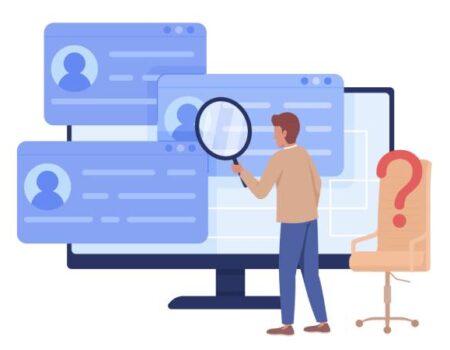How to Write Effective Knowledge Base Articles
In our early days working in customer support, we quickly learned how valuable clear and accessible knowledge base articles can be. They empower customers to solve issues on their own and reduce the load on support teams. Over time, we’ve seen firsthand how a well-crafted knowledge base can cut support tickets by up to 70%, increase customer satisfaction, and even boost search visibility for terms like “knowledge base articles.”
As a team of customer experience (CX) professionals, we’ve implemented knowledge base strategies across startups and large organizations alike. In this guide, we’re sharing the insights and best practices we’ve gathered, so you can create knowledge base content that truly supports your customers.
Whether you’re leading a support team, running a business, or simply passionate about customer experience, this guide will help you harness the power of a knowledge base to drive success.
What is a Knowledge Base Article?
A knowledge base article is a helpful piece of content found in a digital library. This library is made for users and customers to find answers on their own about a product, service, or process.
From our experience in customer support, we see these articles as an important part of helping users. These articles can come in different formats, such as:
- Step-by-step guides
- FAQs
- Troubleshooting help
- Detailed explanations of features
We usually create articles using simple text, but we also like adding screenshots, videos, or images to make the information clearer. This is helpful because people learn in different ways.
What Makes Knowledge Base Articles Special?
What makes these articles different from blog posts is their main goal: they focus on giving clear and quick solutions. Blog posts might try to entertain or share news, but knowledge base articles are made to solve problems directly.
For example, we once created an article that showed how to reset an API key. It included clear steps and a screenshot. After sharing it, we saw fewer people asking for help with that problem.
These articles are also more focused than other types of content. Each article talks about just one question or issue. They are also grouped into simple categories like Billing, Account Help, or Troubleshooting, so people can find them fast.
Why Knowledge Base Articles Are Useful
Based on our work in fast-moving tech companies, we’ve seen how helpful these articles can be. They bring real benefits to both customers and businesses.
Here are six key benefits we’ve noticed:
- They make support faster
- They help customers solve problems on their own
- They keep the information the same across teams
- They save time for support teams
- They help users understand products better
- They can support marketing efforts
Benefits of Knowledge Base Articles
We’ve seen that knowledge base articles bring real results for both customers and businesses. They are very useful for any company that wants to give great support and improve how things work.
Here are six main benefits we’ve noticed. These are based on recent data and our time working in fast-paced tech companies. These articles don’t just help support, they also improve how teams work and even help with marketing.
1. Reduces Support Ticket Volume
One of the best things about knowledge base articles is that they reduce the number of support tickets. When a customer can solve a problem using an article, there’s no need to send a ticket to the support team. This is called deflection.
For example, at Skybound, we look at customer tickets each week. If we see the same question coming up again and again, we write an article to answer it. Over time, we notice that fewer tickets come in about that issue.
2. Improves Customer Satisfaction
When customers solve problems on their own, they feel more confident. This makes them happier with the company. This good feeling comes from a few things:
- They feel more in control.
- They don’t have to wait for help.
- They trust the company more.
This trust helps build loyalty. In our past work, we’ve seen better customer satisfaction scores and higher ratings when the knowledge base is strong.
3. Enhances Employee Productivity
These articles are not just for customers. They also help teams work better. Our sales team used articles to answer common questions during demos. This saved them time and made them more prepared. Our support team also used internal articles to keep track of bug fixes and updates.
4. Standardizes Information
As teams grow, it’s important that everyone shares the same message. In the past, we saw how different people gave customers different answers. This caused confusion and more support tickets.
When we use knowledge base articles, we make sure everyone is saying the same thing. That way, customers feel more sure about the help they get and trust the company more.
5. Supports 24/7 Availability
Customers are now all over the world, so they need help at different times. Knowledge base articles give them support anytime, without needing someone online.
For example, we often check our article views in the morning and see many people from Asia-Pacific have already found what they need, without sending a ticket. People also like this.
6. Boosts SEO and Organic Traffic
One thing we didn’t expect at first was how much these articles help with SEO. Around 52% of online searches are people looking for helpful information.
If we write articles with useful titles and keywords, like “How to fix sync errors,” they can appear in Google search. This brings more people to the website and can even lead to new customers. These articles can also show that your company is an expert in the field.
So, knowledge base articles not only help your support team, they also help your website grow and bring in more traffic over time.
How to Create Knowledge Base Articles
Creating helpful knowledge base articles takes practice, but it’s very useful when done right. The main goal is to solve problems quickly and clearly. Below are nine easy steps we follow to make sure our articles are clear and useful.
Step 1: Find Common Customer Questions
We begin by checking support tickets to see what questions come up often. We look for similar problems and group them into topics like “How to update account info” or “Why did my payment fail?” After this, we draw a simple chart to connect the topics and help plan the articles.
Step 2: Use a Clear Structure
A simple layout helps readers understand the article better. We start with:
- A clear title (like “Why was my order canceled?”)
- A short intro (2-3 sentences about the topic)
- Steps or tips with headings
- Images or videos to help explain
- A quick summary of what to do next
We also test the format with a few people to make sure it’s easy to follow.
Step 3: Write for the Right Audience
Different readers need different levels of detail. For example, tech teams might need more technical words, while regular users prefer plain language. Since most people now use phones to browse, we keep the text short and easy to read on mobile screens.
Step 4: Add Visuals
Sometimes, pictures explain better than words. That’s why we add screenshots, simple drawings, or short videos to show steps clearly. Many people understand things faster when they can see them, not just read about them.
Step 5: Use Keywords for Search
To help people find the article through search engines like Google, we include common search phrases in the title and main text. Some tools suggest helpful keywords to make articles easier to find online.
Step 6: Organize with Categories and Tags
We put articles into simple categories like “Billing” or “Troubleshooting” and add tags like “login error” or “refund” to help people find answers faster. This makes the knowledge base easy to use for both customers and team members.
Step 7: Keep Content Updated
Old or wrong info can confuse readers. That’s why we check and update articles often. Small changes are made weekly, and bigger ones are planned ahead. If needed, we go back to step 2 and improve the article structure.
Step 8: Ask for Feedback
It helps to know if the article is working. We use buttons like “Was this helpful?” at the bottom of each page. We also let users leave comments to suggest changes. This helps us improve the articles that people don’t find useful.
Step 9: Use AI Tools
AI tools can help create first drafts quickly. We give the AI some common customer problems, and it helps us write a basic version of the article. We then review it and make sure it’s accurate and helpful. Many support teams now use AI to save time and improve their knowledge base.
Examples of Knowledge Base Articles
Here are a few examples of helpful knowledge bases that follow simple and clear steps. Knowledge bases can look different, but the best ones share similar features that make them easy to use.
Greenhouse Support Center
The Greenhouse Support Center is a great example. On its homepage, there are many ways to start – a search bar, popular topics, and clear categories. This is helpful because not everyone looks for answers in the same way. Some people like to search, while others prefer to click through topics.
The clean and simple layout helps users find what they need quickly. The “Most popular subjects” section uses pictures and clear titles, so it’s easy to understand what each article is about.
This also follows the 80/20 rule – solving the top 20% of common problems that help 80% of users. It saves time and makes the support experience smoother.
If we look at a single article, like the jobs manual from Greenhouse, it’s organized into clear steps. It uses helpful notes and visuals to guide the user. The green info boxes are great for pointing out special tips or extra details. There’s even a table to compare job options.
These small details make things easier to understand and reduce confusion. When building a knowledge base, here are some things to keep in mind:
- Organize your content clearly.
- Use images to support text.
- Keep the design simple.
- Focus on the most common questions first.
A good knowledge base article is easy to find, easy to read, and solves the user’s problem.
Slack Help Center
The Slack Help Center is another strong example. The greeting at the top says, “Hi. How can we help?” It feels friendly and welcoming.
There’s a big search bar and links to common topics. The categories are easy to see, and the layout is simple but effective. This makes it easy for people to find answers fast.
When we check an article like “Managing your organization’s connections,” we can see how well it works. First, it appears at the top of search results, which means Slack is using keywords well. That way, people can find the article even if they start on Google.
The article itself is clear. It tells users right away what the article covers and who can use the feature. The steps are short, visual, and easy to follow. At the bottom, users can click buttons to share whether the article helped or not.
That feedback helps improve articles over time. Here’s what Slack does well:
- Uses friendly and simple language.
- Organizes content with helpful visuals.
- Keeps steps short and easy.
- Collects feedback to keep improving.
This is a great guide for anyone building or updating a knowledge base. The goal is always the same: make answers easy to find, easy to follow, and easy to improve.
Easy Templates for Knowledge Base Articles
We made these two templates to help you create clear and helpful knowledge base articles. These are easy to follow and let you share useful information with your users quickly.
Whether you’re explaining how to do something or helping someone fix a problem, these templates are a great place to start. (You can also download HubSpot’s free template if you want.)
Here are the two templates you can use right away:
Template 1: How-To or Educational Articles
Title: [What users will learn to do or understand]
Intro: [One or two short sentences. What is the goal of this article?]
Section 1: [First Step or Topic]
If you’re giving steps:
- Start with this.
- Then do this next.
- Keep going like this…
[Add screenshots here]
[What should the user see after finishing the steps?]
[Add screenshots if needed]
[Is there a possible problem? Add a fix here.]
If you’re explaining something:
- Keep it simple.
- Use short sentences.
- Add bullet points to help explain.
Section 2: [Next Step or Topic]
(Use the same format again)
(Add more sections if needed)
Related Articles:
- [Link 1]
- [Link 2]
- [Link 3]
Still Need Help?
Let users know how to contact support.
Was This Helpful?
Yes / No (Add comment box if you want)
This first template is best for explaining steps clearly or helping users learn something new.
Template 2: Troubleshooting Articles
Title: [The problem the user is facing]
What’s Happening?
[A short explanation of the problem]
Possible Causes:
- [Cause 1]
- [Cause 2]
- [Cause 3] (Add more if needed)
How to Fix It:
Solution 1:
- Start with this step.
- Then try this.
[Add screenshots here]
What Should Happen:
[A short note about what users should see if it works]
[Add screenshots if helpful]
If That Didn’t Work, Try This:
- Try this new step.
- Then try this next step.
Still Not Working?
[Add a link where users can send a support request]
Related Articles:
- [Link 1]
- [Link 2]
- [Link 3]
Was This Helpful?
Yes / No (Optional comment box)
Partner with our Digital Marketing Agency
Ask Engage Coders to create a comprehensive and inclusive digital marketing plan that takes your business to new heights.
Your Knowledge Base, Your Success
A good knowledge base helps your customers and saves your team time. As you write your own articles, try different styles, ask for feedback, and keep improving.
One last tip: start small. Begin with the most common questions and build from there. The key is to start, keep learning, and always think about helping your users.







